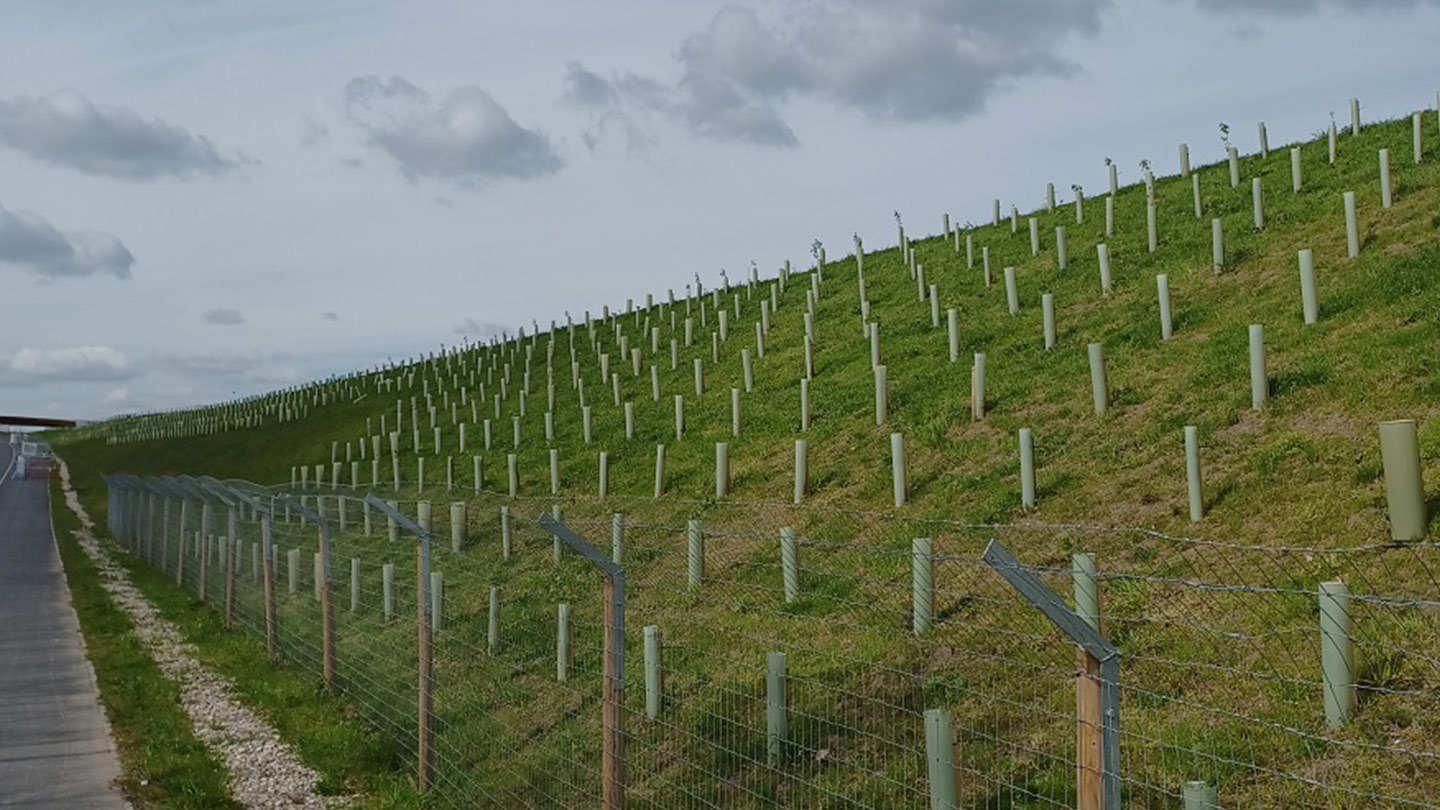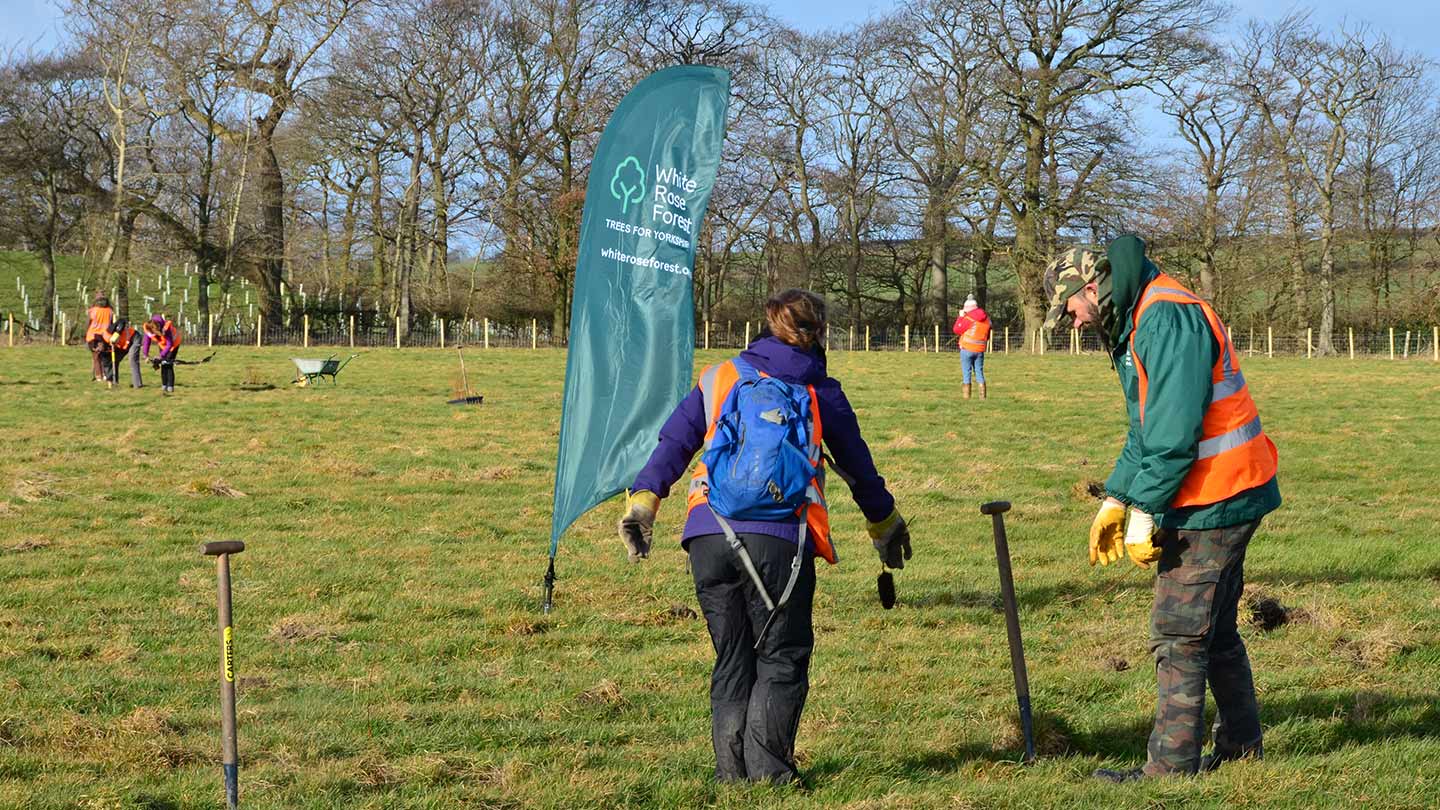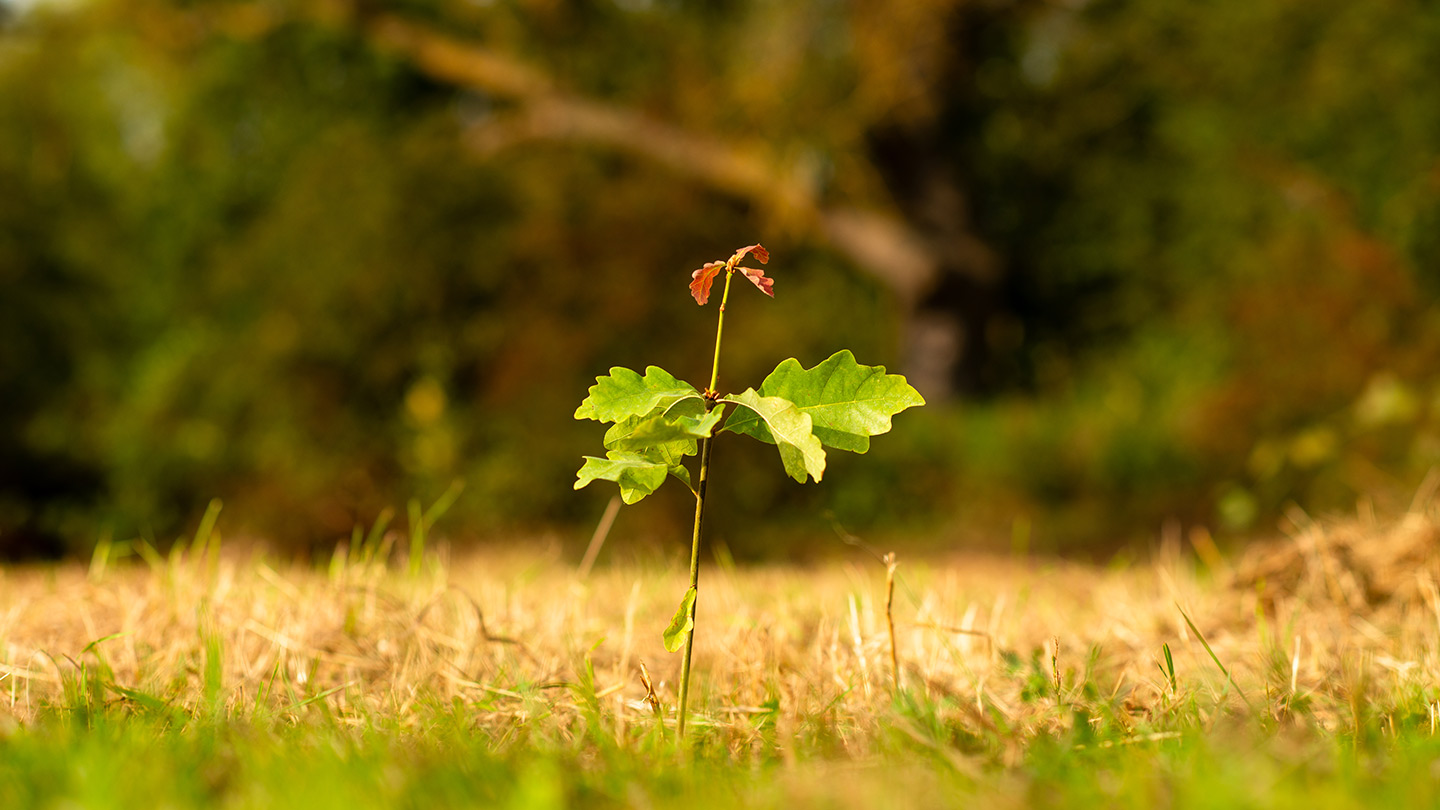Greening Leeds: woodland creation along the East Leeds Orbital Route
The East Leeds Orbital Route (ELOR) opened in August 2022 to reduce congestion on the existing Leeds Ring Road and create better connections to the M1 motorway. This ambitious project includes considerable new infrastructure to connect it with surrounding communities and provide new active travel and walking routes.
Like all major road developments, it brings environmental impacts, including increased air pollution and habitat fragmentation. To mitigate this impact, 14ha of tree and woodland planting were incorporated into the scheme to provide wildlife corridors, improve air quality and contribute to Leeds City Council’s net zero targets.
Tree planting for this project was primarily funded via the West Yorkshire-plus Transport Fund and Leeds City Council, with support from the White Rose Forest’s Trees for Climate Fund to cover future maintenance costs.

Tree planting next to the East Leeds Orbital Route. Credit: Leeds City Council
Over at Bramley Grange Farm, which borders the ELOR to the south and west, old farm buildings were demolished as part of the road development. Here, 5ha of new woodland has been planted alongside scrub areas for natural regeneration and open land to link up with existing green spaces and woodlands, as well as the new woodland created as part of the ELOR scheme. Oak, holly and privet were included in planting to provide an evergreen screen, reducing pollution and enhancing the landscape. There are also formal and informal pathways, linking to active travel routes that encourage cycling and walking.
Positive impact
Air quality
Planting along the ELOR and Bramley Grange sites has been designed to reduce pollution and provide screening, creating a healthier environment for pedestrians and cyclists using the new active travel routes.
Public access
New footpaths and cycle routes that run alongside the main road system connect communities and green spaces. The new woodland acts as a natural buffer, providing shade, shelter and scenic landscapes.
Biodiversity and wildlife
The species-rich woodlands create new habitats for birds, mammals and insects. The planting meets the council’s green and blue infrastructure policies and makes a strong contribution to the Leeds Habitat Network.
Net zero
The woodland project aligns with Leeds City Council’s commitment to increase tree canopy cover from 17% to 33% by 2050, playing a crucial role in achieving net zero goals.

Community volunteers planting trees at Bramley Grange Farm, next to the East Leeds Orbital Route. Credit: White Rose Forest
Community at heart
As part of the planting at the Bramley Grange Farm site, volunteers took part in numerous planting days. Led by Leeds City Council and the White Rose Forest, this type of event is all about increasing opportunities for community groups and volunteers to come together to plant and learn about native woodland.
A greener, healthier future for Leeds
By integrating woodland creation into transport infrastructure, this project demonstrates how cities can balance development with environmental sustainability. With strong community and environmental benefits, the ELOR planting scheme could act as a model for future transport corridor woodland projects across the UK.
Be part of the Northern Forest
Want to plant trees? Whether you’re creating new woodland or extending an existing site, you can reap a whole host of extra benefits.
- Boost biodiversity.
- Provide shelter.
- Protect your soil.
- Fight flooding.
Your new trees could be part of the Northern Forest and make a difference for people, wildlife and the environment in the North of England.

Credit: Phil Formby / WTML
Make a start today
Speak to an expert adviser from any Northern Forest partner for no obligation advice and support.